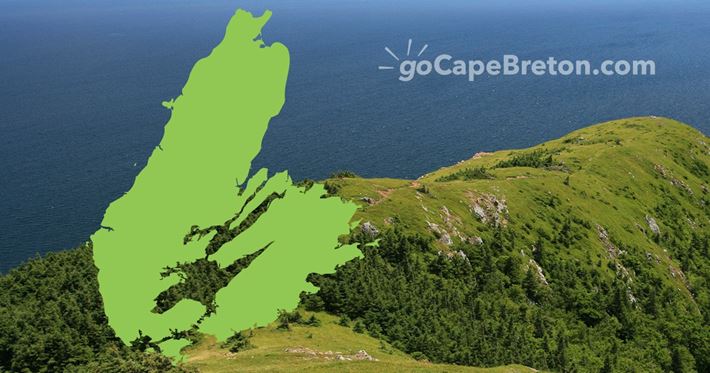There are 75% fewer moose in Cape Breton, and notably in the CB Highlands National Park.
Recently the NS Dept. of Lands and Forestry provided information from the March 2019 moose population survey through stories in the media. The 2019 survey in Cape Breton included participants from NS Dept. of Lands and Forestry, Parks Canada, the Unama’ki Institute of Natural Resources and the Confederacy of Mainland Mi’kmaq, and it showed a dramatic decline in the numbers of moose.
In this most recent 2019 aerial survey of the Cape Breton Highlands Greater Ecosystem, which includes the CB Highlands National Park, only about 1300 moose were counted. In the previous 2015 aerial survey, the moose population had been stated as 4700. In the National Park in 2015, the survey apparently indicated there was an estimated 1800 moose, or 2 per square kilometer. This was claimed to be four times more moose than a healthy forest could support according to Parks Canada and UINR, both proponents of a moose cull on North Mountain.
Based on the results of the recent 2019 survey, four years later, there is now just an estimated 481 moose in the National Park according to Parks Canada Resource Conservation Manager, Mr. Rob Howey, working at CB Highlands National Park.
My email request to Parks Canada for additional information from the 2019 aerial survey is yet unanswered. Another request, made through the CBHNP facebook page, was also unsuccessful. Perhaps the Parks Canada delay in getting information to the public is due to their futile attempts to put a positive spin on the drastic survey findings. But how do you put a positive spin on such a steep decline in moose numbers in the National Park, which seemingly overnight went from an estimated 1800 to about 481 moose.
This dramatic decline in moose population by about 75% happened throughout the whole National Park, and not only in the North Mountain study area. Ironically, more than 138 moose were culled on North Mountain as 'hyperabundant', but now sadly appear to have been killed in a seemingly unnecessary exercise. Doing the math, it's possible that there may have been only about 620 moose in the Park during the time when those 138 moose - adults, pregnant females, and calves - were being killed indiscriminately in four culls.
In a radio interview on June 6, 2019, the CBHNP Resource Conservation Manager, Mr. Rob Howey, was asked about what factors may have contributed to the drastic decline of 75% in the moose population as per the recent aerial survey. Some of the excuses put forward by Mr. Howey to try to explain the decline were as follows, and none of them hold water when you look at the big picture over the past four years of killing moose in the CBHNP.
Factor #1:
Wildlife populations fluctuate year to year. That statement almost makes me laugh because Parks Canada and UINR, both proponents of the cull, have consistently brow-beaten the public with the unchanging and supposedly 'hyperabundant' number of 1800 moose since 2014, even before the culls began.
The drastic decline in moose population in just four years - from about 4700 to the current 1300 in the CB Highlands Greater Ecosystem, and from 1800 to the current about 481 in the National Park - a decrease of 75% - did not happen overnight.
Parks Canada may try to say now that wildlife populations fluctuate year to year, yet throughout the four years of the moose cull, the moose population apparently remained consistent according to what Parks Canada and UINR claimed.
Since before the culls began in 2015, we were constantly told by Parks Canada and UINR, their partners in the cull, that the moose population was 'hyperabundant' at about 1800, or 2 moose per sq km, and they claimed that density was four times more than a healthy forest could support.
Strangely, that 1800 number remained unchanged in their message to the public throughout the cull years - until now. Apparently nothing: births, deaths, harsh weather, affected the so-called hyperabundant moose population during the culls.
Factor #2
Harsh winters over the past 4 or 5 years. The CBHNP Resource Conservation Manager states now that harsh winters can lead to a higher winter mortality for moose, and could be a factor in this major moose population decline. Yet that factor was never considered important before or during the moose culls on North Mountain.
The issue of harsh winters was raised even before the moose culls began in 2015. Participants at community meetings, and moose hunting guides, through their observations, believed that moose numbers had been greatly affected by previous extremely harsh winters with large snowfalls. At that time, it was thought that the population was down by as much as 50% of what Parks Canada and UINR were touting was a hyperabundant moose population of 1800.
Although concerns were expressed at that time to the proponents of the moose cull, the concerns were ignored by Parks Canada and moose management 'experts' whose main focus was on the killing of moose in the CBHNP. They turned a deaf ear to the issue of harsh winters and high winter mortality as being a factor in the moose population, even going so far as to say that: 'moose are designed to survive harsh winters'. (CB Post, October 28, 2015) and '...even the winter doesn't bother them much - remember, they are a northern animal and are accustomed to winter conditions'. (CB Post, November 7, 2017)
Perhaps those concerns were well founded after all, and the number of moose at the beginning of the culls may not have been near the 1800 hyperabundant population being spoon-fed to the public.
Factor #3:
Lower calving rate. The CBHNP Resource Conservation Manager states now that lower calving rate could be a factor in the steep moose population decline. Yet the importance of calves and calving rate was cruelly ignored during the four moose culls on North Mountain.
During those culls, 138 moose were killed indiscriminately including 21 calves no older than 6 months of age, and 19 pregnant females. The numbers of their unborn fetuses were not tracked by Parks Canada or UINR, perhaps because it was a huge embarrassment - as it should have been. Calves and calving rates did not appear to be a concern to the proponents of the moose cull in their rush to kill as many moose as possible in the North Mountain area.
Factor #4
Less food was available for browsing. Parks Canada believes that less food could be a factor for the major decline in population. Yet data collection from the moose killed during the culls showed that the majority of those moose had been in good health.
Following the 2018 moose cull, Parks Canada indicated that the signs of forest regrowth were encouraging and showed a much higher than expected increase (about 95%) in twig availability, both in the control plots on North Mountain, and on French Mountain where no moose culls took place. Lack of food did not seem to be an issue for the moose based on what we were being told by Parks Canada.
Factor #5
New data is now available. Mr. Howey of Parks Canada stated that they worked with data they had over the last 20 to 30 years, and that data showed high numbers of moose. However, according to the Hyperabundant Moose Management Plan of November 2015, ongoing monitoring was supposed to take place, especially given that people in nearby communities were concerned about moose population depletion outside of National Park boundaries.
One would think that ongoing monitoring would have showed declining numbers of moose, because they certainly didn't decrease from about 1800 to about 481 overnight.
According to Parks Canada's own documents before the start of the moose culls, there was a declining trend in the number of moose. Yet that so-called 'hyperabundant' moose population number of 1800, or 2 moose per sq km, was consistently given to the public.
The 2015 aerial survey has been used to justify the 1800 moose population number. However, emails obtained through ATIP give food for thought as to the accuracy of the 2015 survey numbers which were released to the public at that time.
According to some Parks Canada email comments which were made about the results of the 2015 survey, there were issues with the data:
- "....we are getting lower numbers of moose observed overall..."
- "The more I look in to it, the more troubling the intensive data seem. Almost half the data are problematic..."
- Regarding moose estimates, old school, it was stated: "I played around a little bit..."
- "I adjusted the numbers in all sections that referred to the aerial survey results. The new numbers are the latest we came up with..."
It may be that the 1800 moose were not actually there at all before the culls began.
As recently as in a November 8, 2018 radio interview, the Parks Canada Resource Conservation Manager for CBHNP stated that there were around 1800 moose in the National Park based on the 2015 survey. When asked in that 2018 interview about the state of the population, he indicated that 'our data shows that this is an accurate estimate of the population in the Park at the moment.' That statement was made just four short months before the March 2019 aerial survey showed only about 481 moose.
Failure
Since before the moose culls began, and throughout those four culls, the public was told over and over that the moose population number was 1800, all seemingly a part of the Parks Canada and UINR efforts to have us believe that moose were hyperabundant and that the culls were justified. Apparently, not so!
Parks Canada seems to try to deflect attention from the fact that the so-called 'hyperabundant' moose population of 1800, or 2 moose per sq km, has suddenly become the 'sustainable' population of about 481 or about 0.5 moose per sq km.
The Resource Conservation Manager actually thinks that the survey results of 75% fewer moose could be viewed as "really good news for the Park" because apparently the forest can sustain that new number. Not such good news for the 138 moose who were apparently killed needlessly!
Instead, Parks Canada should be viewing the recent surprising survey results as a total failure and complete breakdown of their data. It is proof of the flawed science that was used by Parks Canada and UINR to justify the killing of moose in the CB Highlands National Park.
The factors which Parks Canada now would have us believe are significant in the drastic decline in moose numbers, were factors brought up before the moose culls first began, and they were ignored by Parks Canada and UINR at that time with the single-minded rush to kill moose in the National Park.
Parks Canada may try their best to spin this surprising steep population decline in a positive light, but the real story here is one of failures:
- failure of data;
- failure of the science used to determine that data;
- failure of meaningful public consultation;
- failure of ongoing monitoring;
- failure of Parks Canada to protect the wildlife within its boundaries; and
- failure of a Federal Agency's responsible use of taxpayer money with the terrible waste of more than $1 million dollars to kill 138 moose that apparently didn't have to be killed in the National Park in the first place.
The only positive to be seen in this whole issue may be that the moose population aerial survey was conducted when it was - in March 2019. Had this survey not happened at that time, Parks Canada and UINR would no doubt have continued using flawed data to promote a Park-wide moose reduction, as was the apparent documented intention from the beginning.
In that scenario, we could have been looking at a catastrophe similar to what now exists on the NS mainland. There, overhunting was a contributing factor to the numbers of endangered mainland NS moose being reduced from thousands to fewer than 100, based on their latest survey.
Links to the CBC radio interviews:
November 8, 2018 - www.cbc.ca/player/play/13651344035
June 6, 2019 - www.cbc.ca/player/play/1533436995751
Rose Courage, Sydney / Victoria County, Cape Breton





1
Log In or Sign Up to add a comment.- 1
arrow-eseek-e1 - 1 of 1 itemsFacebook Comments